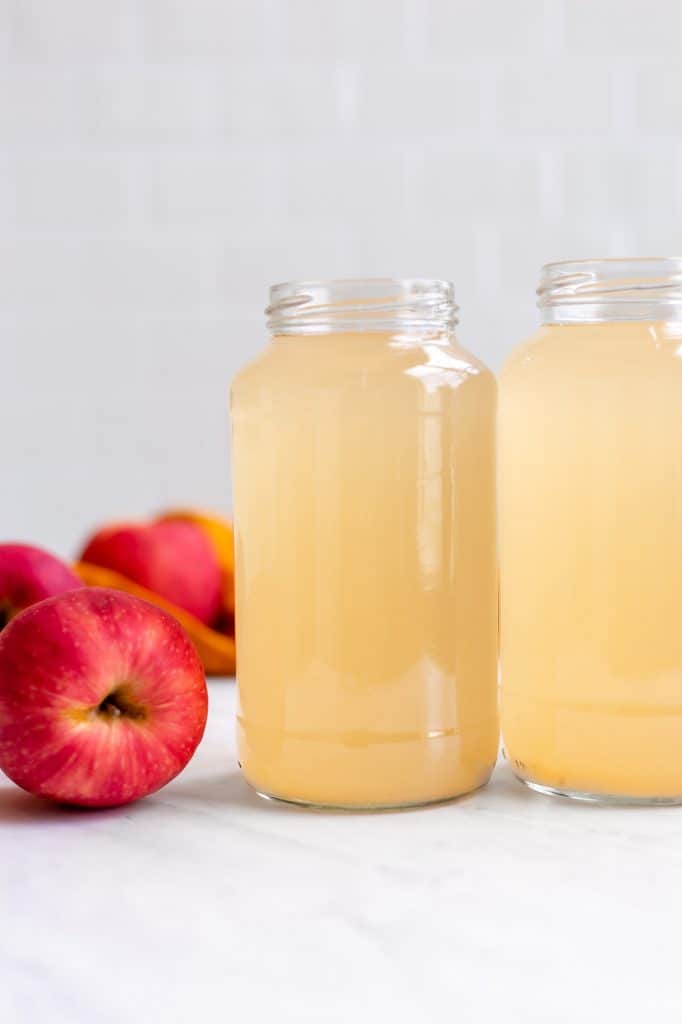- 6 cups of fruit*
- 255 grams of organic cane sugar
- Water
- 3 tablespoons raw apple cider vinegar with the mother (as starter culture)
- 1 gallon glass jar
- tight-weave cloth covering
- rubber band
- Please read the recipe notes.
- Chop the fruit into small chunks.
- Add the sugar and apples (or other fruit) to a 1-gallon glass jar.
- Add water to the jar until full.
- Add in a few tablespoons of raw apple cider vinegar with the mother. This helps establish a good microbial community, and while it isn’t absolutely necessary to add I highly recommend it. If you’ve made vinegar before and have a vinegar mother, you can add it.
- Stir the mixture until all the sugar is dissolved.
- Place a cloth lid (tight-weave is best, like t-shirt material) on the jar and secure with a rubber band.
- Stir the mixture once or twice a day and allow to ferment at room temperature for three weeks. Don’t forget to stir it. I like to just do it first thing in the morning each day.
- You should notice the mixture bubble within one week.
- After three weeks of fermentation, strain out all the fruit pieces, replace the cloth lid and allow the mixture to ferment for 6 more weeks.
- You will notice a vinegar mother form on the surface (it looks like a kombucha SCOBY but is very light in color). You can keep this to start your next batch of fruit vinegar.
- After fermentation, bottle the vinegar and seal it with a solid lid. Store at room temperature in your pantry.

